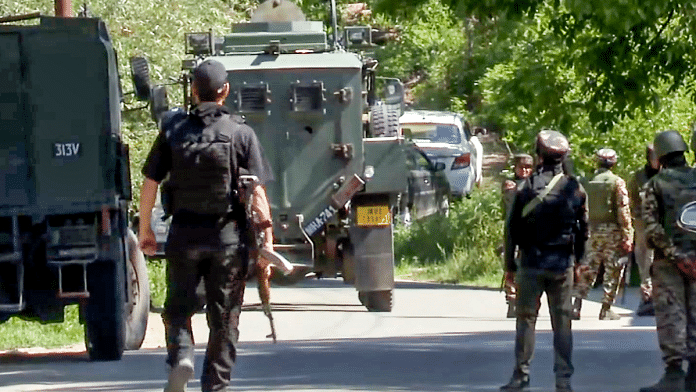Thank you dear subscribers, we are overwhelmed with your response.
Your Turn is a unique section from ThePrint featuring points of view from its subscribers. If
you are a subscriber, have a point of view, please send it to us. If not, do subscribe here: https://theprint.in/subscribe/
The security landscape in Jammu and Kashmir has undergone a significant transformation since the abrogation of Article 370 in 2019. Local recruitment into militant ranks has fallen to historic lows, with the number of active local militants now reduced to single digits. The “Operation All Out,” carried out by the Indian Army, CRPF, J&K Police’s Special Operations Group (SoG), and intelligence agencies, has effectively decimated indigenous terror networks across the Valley.
However, this decline in local militancy has pushed Pakistan’s Inter-Services Intelligence (ISI) to adopt new strategies. Over the past two years, Islamabad has sought to revive militancy in areas that were hotbeds of violence in the 1990s—such as Poonch, Rajouri, Samba, Kathua, Kishtwar, and Doda. These regions, with their difficult terrain and forest cover, are now being exploited to shelter foreign terrorists (FTs), who are posing fresh challenges to Indian security forces.
Unlike earlier years, the new wave of militancy has a complex, low-visibility character. FTs are avoiding close interaction with the local population, instead choosing to remain in dense forests and higher reaches where surveillance is more difficult. Human intelligence (HUMINT) in these areas is minimal, while technical intelligence (TECHINT) is being tested by the use of high-frequency, encrypted satellite phones—many sourced from China—that make tracking difficult.
The recent Pahalgam terror attack illustrates this evolving threat. While the incident briefly shocked the Valley, it also showcased the rapid response capacity of India’s counter-terror grid. Within days, joint operations by the Army, CRPF, JKP SoG, and central intelligence agencies succeeded in cornering and eliminating the attackers in the forest belts. This success was made possible by a rare but effective combination of HUMINT and TECHINT.
Yet, the broader pattern is more concerning. Security agencies estimate that over 100 FTs are currently active in J&K. What makes the situation complex is the operational disconnect between foreign terrorists (FTs) and local terrorists (LTs). Unlike in previous decades, locals are not directly embedded with FTs. Recent encounters suggest that LTs have often been killed without FTs, and FTs neutralized without locals. This separation has created a more “secure mode” for FTs, who are harder to track and engage.
Moreover, the old network of over-ground workers (OGWs) and sympathizers is evolving. Instead of coordinating directly with active cadres in the Valley, many OGWs are now in contact with cross-border handlers. This shift has transformed militancy into a more decentralized, peer-to-peer model, reducing the visibility of terror activities and making it harder for the public—or even intelligence agencies—to detect early warning signs.
The absence of social media propaganda, selective ground contacts, and reduced interaction with civilians make this a “silent militancy.” For the common citizen, there are no familiar visuals of armed militants roaming villages. But for the security establishment, this is precisely what makes the challenge sharper: unpredictability. With no clear pattern of movement, and no public displays, attacks can erupt anywhere, anytime.
In this new phase, law enforcement and security agencies remain on high alert. Joint patrols and cordon operations in forest areas continue, but the evolving nature of terrorism in J&K demands constant adaptation—blending HUMINT with advanced surveillance, while countering new-age encrypted communication systems.
Militancy in the Valley today is no longer about numbers or local visibility—it has become about stealth, strategy, and unpredictability. The challenge for India’s security apparatus lies in staying one step ahead of an adversary that has shifted the battleground from villages to forests, and from mass recruitment to selective, peer-to-peer coordination.
These pieces are being published as they have been received – they have not been edited/fact-checked by ThePrint.


